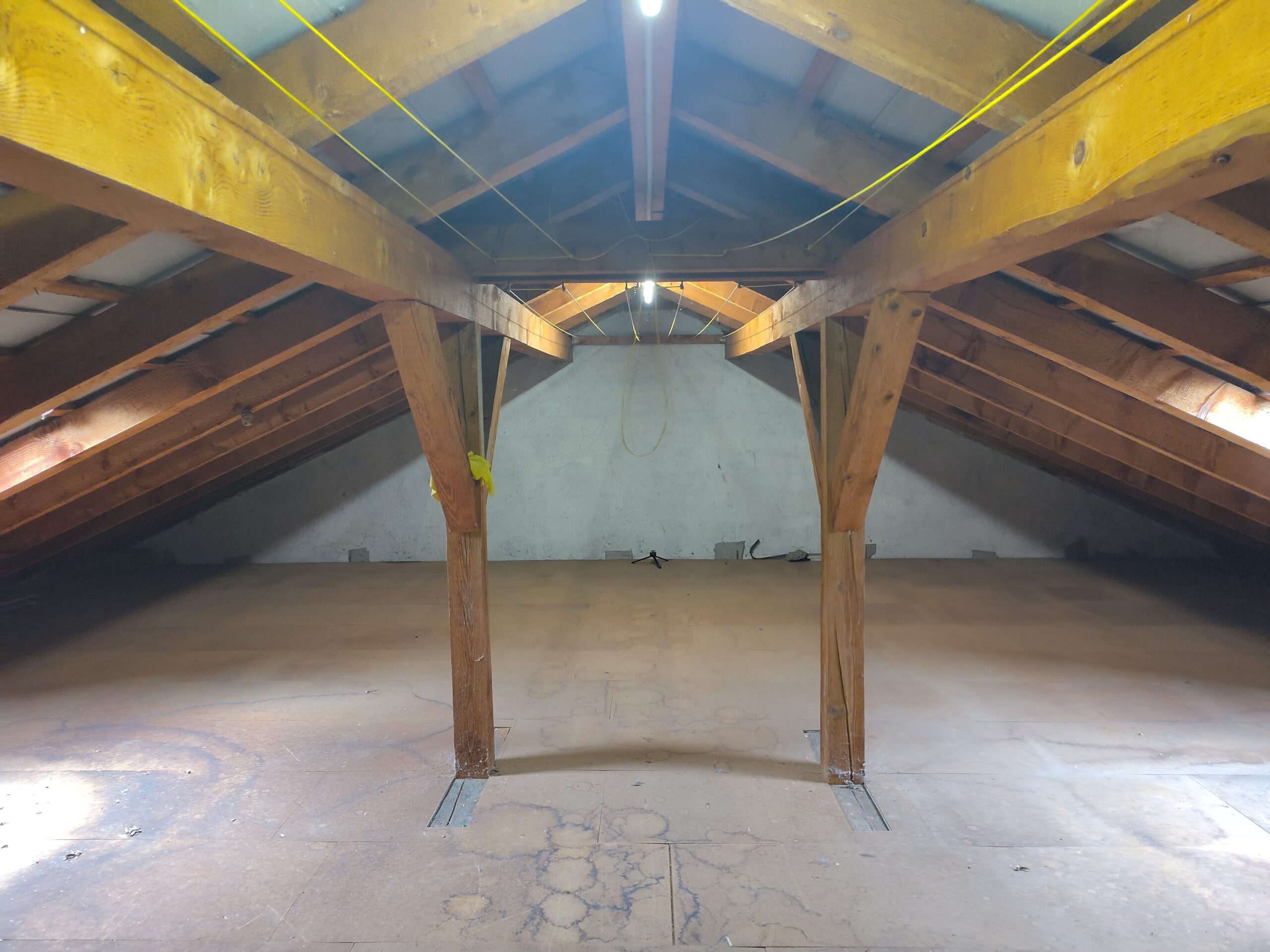Attic
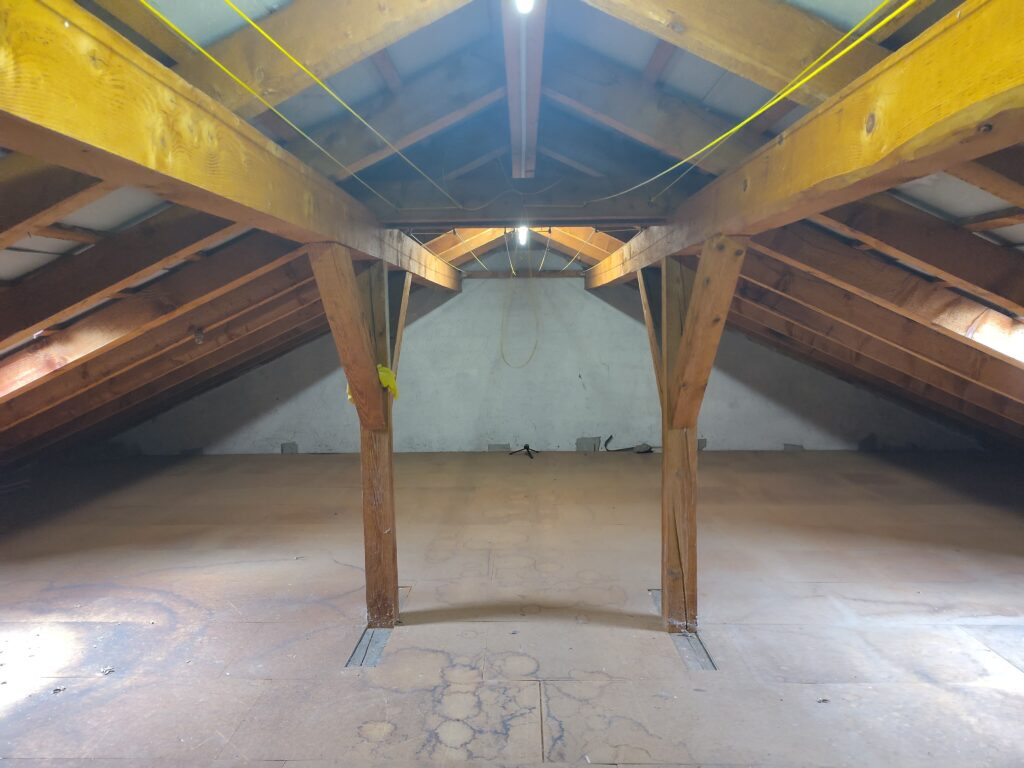
This space is located above my apartment, and its main purpose is storage.
The geometry is best described as an extruded triangle. Most of the surfaces are covered with thin wood composite panels. Since it is located directly beneath the pitched roof, which has no insulation, you can hear the impact of weather, such as rain.
Appliying accoustic slang terminologies: Dull, dead
Cellar
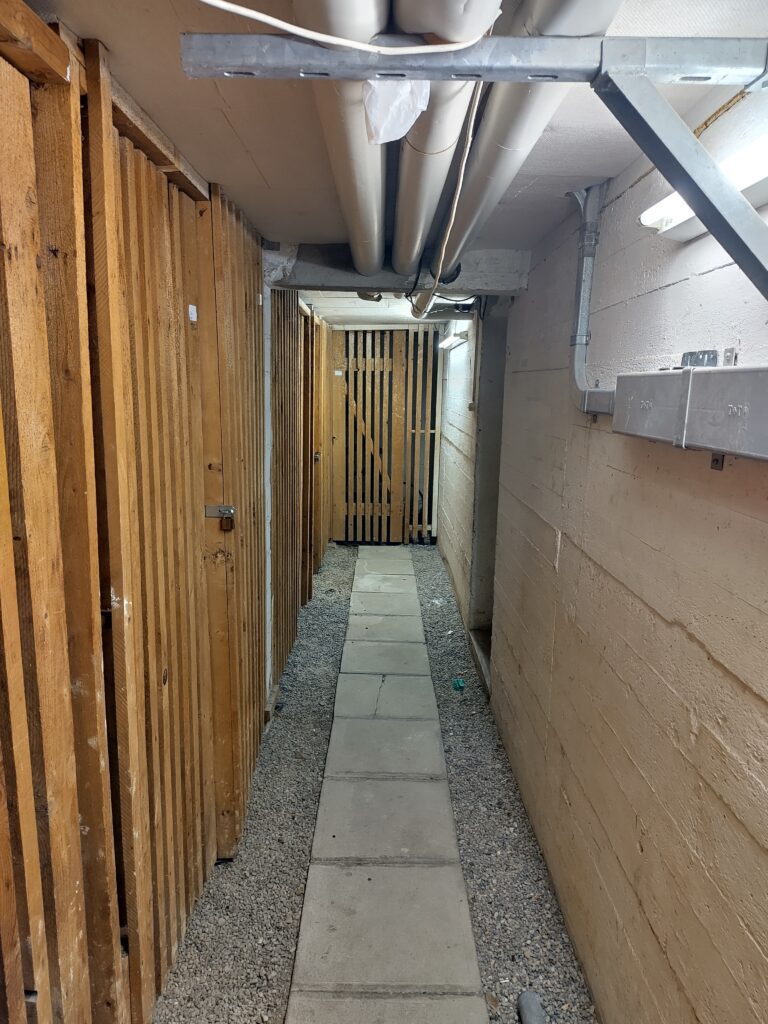
This space is located on the lowest floor of my apartment building, and its main purpose is also storage.
It is located on the underground level, with concrete walls on all sides. The shape can best be described as a windowless rectangular box. If you listen closely, you might hear the faint buzzing of the old lamps fixed to the ceiling.
Appliying accoustic slang terminologies: boxy, Sterile
The reason I chose these spaces is that they serve the same function and contain similar objects. Often, when you enter them, it’s quiet and very dark until the light switches on. This is why my attention is always drawn to the non-visual characteristics of the space when I enter.
2 Exploring the Emotional Impact of Everyday Sound
The two places I chose for this exercise are my room in my shared flat and a secluded spot in the nearby forest.
The room I’m focusing on has a single window, which I always keep open. Most of the dominant sounds come from that direction, but they aren’t constant. Some of the most noticeable sounds include airplanes taking off, buses and cars driving by, birds singing, people working in their gardens, or children screaming. The most prominent sound for me is the bus, as I know exactly when it passes, so it almost functions like a clock. The more overlooked sounds are those coming from inside the room, like the fan of my PC or the tapping noise of my keyboard as I write this text. Since the room feels quite dull from all sides except the window, it often makes me want to leave and explore these same sounds in a more open, 360° experience outside.
In the forest, I hear some similar sounds, but also many new ones. The 360° experience is mostly created by the birdsong and the tapping of woodpeckers, which form a kind of horizontal sound barrier surrounding me. A less dominant but still noticeable sound is that of airplanes, which comes from above and feels very constant. However, there is one new sound that adds a certain flow to the atmosphere—the sound of the wind. Its presence is always noticeable, but the source of the sound moves around, rustling through the leaves of the trees. This makes the biggest difference from the previous room environment. The sound of the wind is calming and relaxing, giving the entire atmosphere a soothing, dynamic quality.
Since both places are very familiar to me, I know which one to use for each activity. While sound is not the main factor that determines how I use the space, it is, after the climatic conditions, the one that influences my well-being in the space the most.
3 Empirical and numerical estimation of room acoustic properties
Both clap recordings are visualized in the following graphic. I’ve picked the attic and the cellar I’ve already used in assignement 1 for this case study. In the Attic, the reverberation time of RT60 is 0.425 s. In the Cellar, the reverberation time of RT60 is 0.145 s.
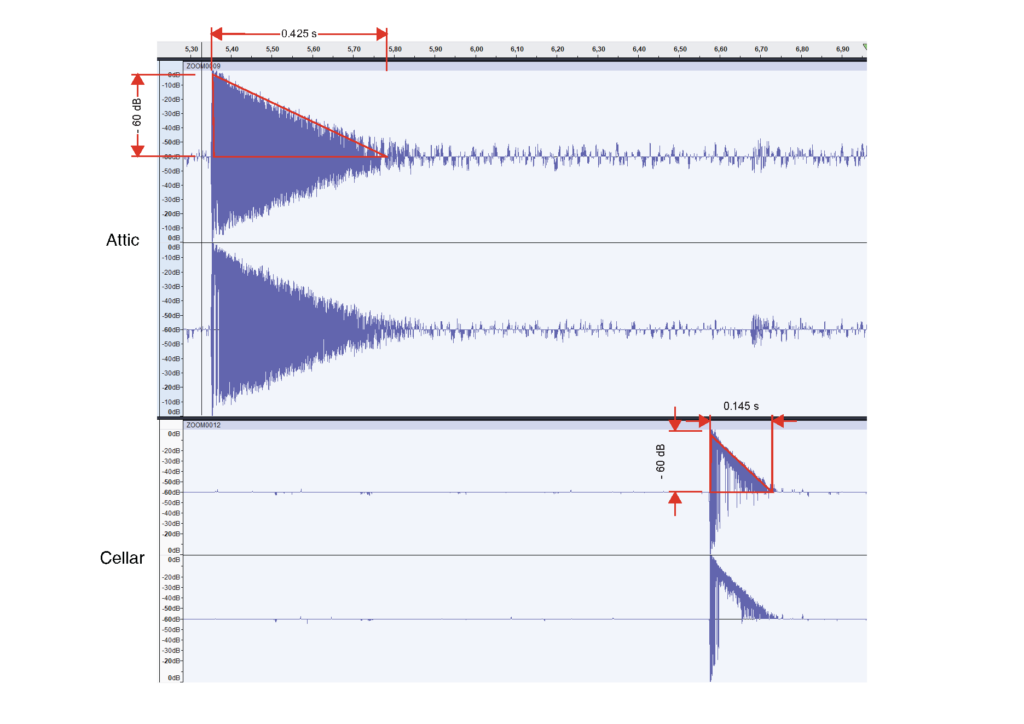
4 Characterization of room acoustic treatments
The wooden lattice compartments may be regarded as an effective diffusive element in both rooms. Such structures may be considered to have comparable characteristics with those of a very porous wall. In the cellar, the wooden lattice compartments subdivide the room into almost equally sized compartments. The attic has been subdivided into compartments to a similar extent as the cellar, with 50% of the room allocated to this purpose and the remaining 50% remaining unfurnished. Given that both rooms are also filled with a considerable quantity of stored material within the compartments, it may be assumed that diffusion is reinforced by this. The geometrical effect of the pitched roof and the low room height of the attic may be responsible for a strong and direct reverb towards the speaker. It is unfortunate that the reverberation is not more pronounced, due to the highly absorptive wooden planks that cover the inner side of the pitched roof.
The most pronounced acoustic effect in the attic is the reverberation from the rear wall, situated between the compartments and devoid of any barrier for the entirety of the room. No additional absorbers have been attached to the walls of the attic room.
In contrast, the cellar has an insulation layer on the ceiling that has a pronounced absorption effect. While its primary function is not to absorb sound, but rather to eliminate heat transfer from the apartment, its effectiveness is considerable, and the 2.10 m high room would undoubtedly have a more pronounced reverberation time without its layer.

Picture 1: Accoustic analysis in the attic

Picture 2: Accoustic analysis in the cellar
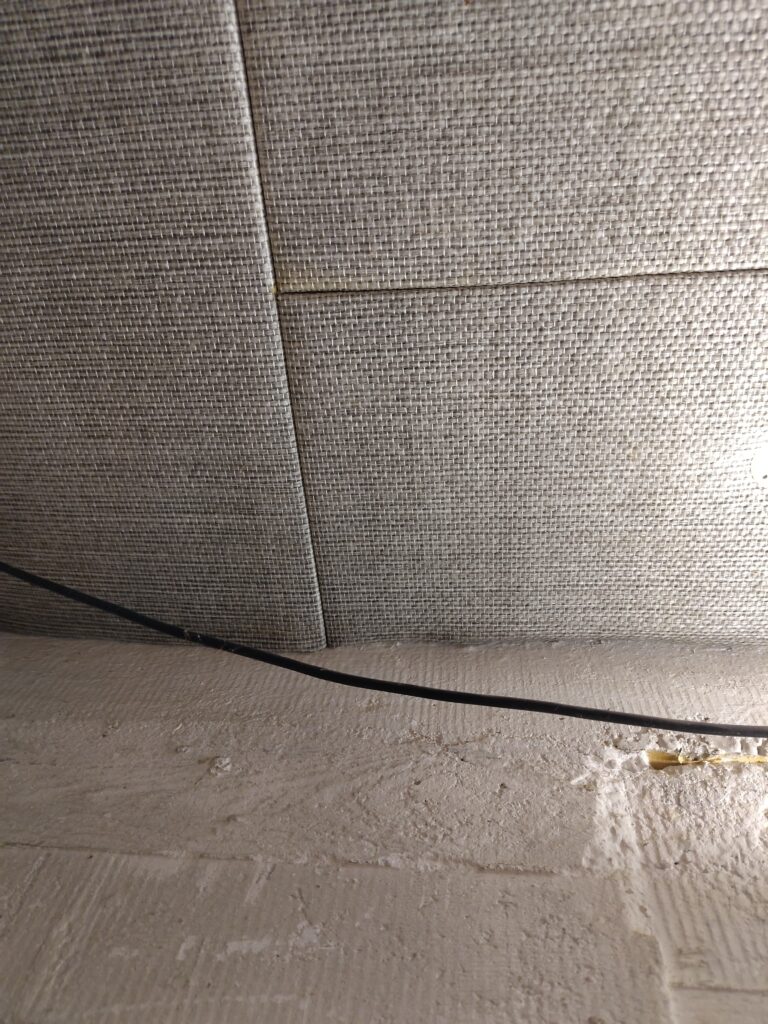
Picture 3: Insulation/Absorber in the cellar
5 Landscape acoustics
The chosen object is a box. Boxes can be found in both of the case study spaces. They lie around… untill somebody opens them to see what is inside. The sound they produce when getting opened depends on the way they are sealed. My chosen object is a representative model of a taped box out of cardboard.
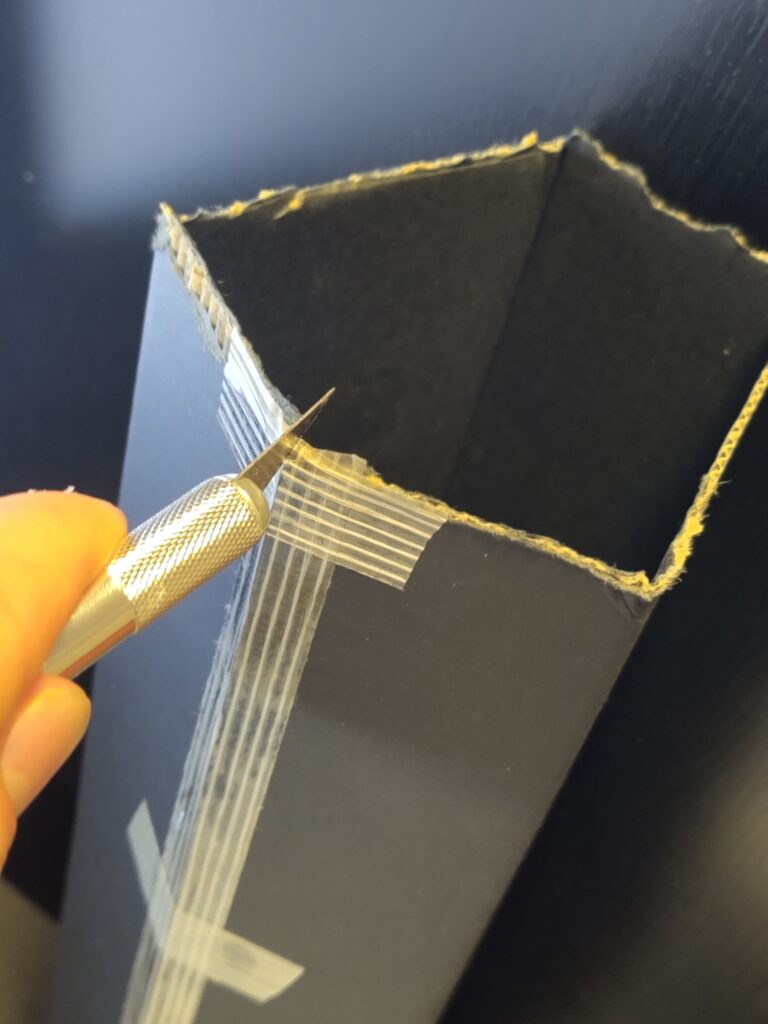
SEMESTEREND PROJECT – EIGENMODES
Introduction
Eigenmodes, also known as natural modes, are the inherent vibration patterns that occur in a system at specific frequencies, known as eigenfrequencies. In room acoustics, these modes play a crucial role in shaping the way sound behaves within a space. Understanding eigenmodes is vital because they can significantly affect sound quality, especially in small or enclosed areas. Low-frequency eigenmodes, in particular, often lead to uneven sound distribution, causing resonances or dead spots that can disrupt the acoustic experience. By studying eigenmodes, we can design spaces with improved acoustic performance, ensuring a more balanced and pleasant auditory environment.
This documentation investigates the eigenmodes and their perception from a human perspective under uniform conditions. To ensure comparability of results, the study focuses primarily on small to medium large concrete rooms. It is easier to investigate in these rooms because eigenmodes are more discrete there than in larger rooms. Nearly all rooms have minimal door and window areas, maintaining consistent structural properties and reducing external influences and unwanted reflections. By standardizing these factors, the analysis ensures that the observed differences in eigenmodes are primarily due to room geometry and not material variability.
Theory
The characteristics of Eigenmodes
Standing sound waves at natural frequencies exhibit fixed patterns of amplitude, with distinct maxima and minima that remain stationary. The experience of these waves varies depending on the listener’s position and the sound emitting source in the room; certain spots may amplify sound significantly, while others may experience minimal or no sound due to destructive interference.
Sound waves propagate radially in all directions from the source, creating a multidimensional composition of natural oscillations. Among these, three specific oscillation modes are particularly relevant for characterizing the sound field:
The axial mode:
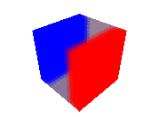
The tangential mode:

The oblique mode:
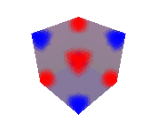
(demonstration of minima & maxima of different fields; source: amcoustics.com/tools/amroc)
While axial modes can establish themselves between 2 surfaces, tangential modes need 4 and oblique modes 6 surfaces to establish themselves, which means that they have a higher energy loss due to the more reflections and are therefore less likely to be audible.

(Visualiztion of sound path; source https://www.soundassured.com/blogs/blog/what-are-room-modes)
Methodology
Intuitive determination:
The study begins by selecting small, rectangular rooms with minimal furnishings to facilitate the identification of eigenmodes. To maintain consistency, I position myself at the center of each room. Natural oscillations are intuitively determined through auditory perception by humming across a range of frequencies (my humming range goes from ca. 150 Hz up 300 Hz) and observing the resulting resonances.
Audio recordings are made during these sessions to capture the acoustic behavior, while the mobile app Spectroid is used as an audio spectrum analyzer to document the specific frequencies and their corresponding loudness levels. This process helps locate as many eigenmodes as possible, with a focus on identifying the most distinct ones, which will be later used for the comparision. Additionally, photographs of each room are taken to visually document the test environment.
Calculation of natural frequencies:
To validate the intuitive findings, an online tool, AMROC (available at amcoustics.com/tools/amroc), is used to calculate the theoretical natural frequencies of each room. By inputting the exact room dimensions, this tool provides a mathematical estimation of the eigenfrequencies.
Repetition with calculated values:
The experiment is then repeated using the calculated eigenfrequencies. These frequencies are activated within the specific rooms, and the resulting acoustic behavior is documented audibly. This iterative process ensures a comprehensive understanding of the eigenmodes, combining intuitive observation with mathematical validation.
Results
This document presents the intuitively determined (i.e., measured) frequency and compares it with the closest calculated axial frequency. For theoretical reasons, this selected value is assumed to be most likely corresponding the measured one.
After repeating the humming, only minor changes could be perceived. This could be due to the minimal difference in frequencies or variations in air conditions compared to the measured values. However, to highlight subtle nuances, I present this audio file as potential evidence that even these slight differences can be barely noticeable to the human ear.
Audio Room 3: first humming at 199 Hz, second humming 202 Hz
Critical reflection and discussion
Since air temperature and humidity influence sound diffusion, they may affect the eigenmode, particularly when experiments are conducted at different times. This variability could explain why the measured values never fully align with the calculated ones.
Using human humming as a sound emitter and human ears as a sound receptor doesn’t allow for clean frequencies, unfortunately. On the other hand, it has the advantage of direct interaction and mutual influence between the source and the receptor. Additionally, it filters out a range of significant modes that can be compared to understand roughly the sound flied that a human voice generates.
Literature/Sources
https://www.soundassured.com/blogs/blog/what-are-room-modes
https://de.wikipedia.org/wiki/Raummode
https://www.baunetzwissen.de/glossar/r/raumresonanzen-44909
https://www.hunecke.de/de/wissen/raumakustik/index.html
https://www.hunecke.de/de/wissen/raumakustik/raumeigenmoden.html

